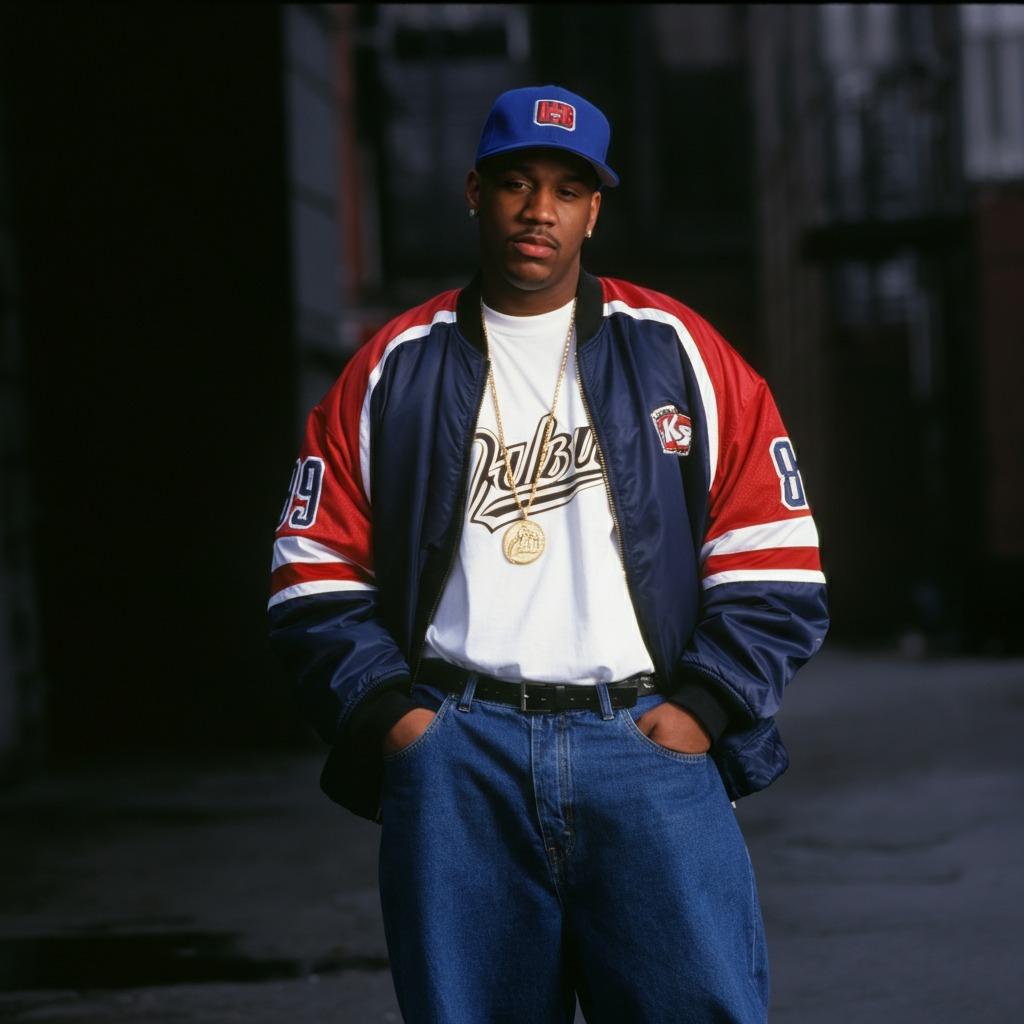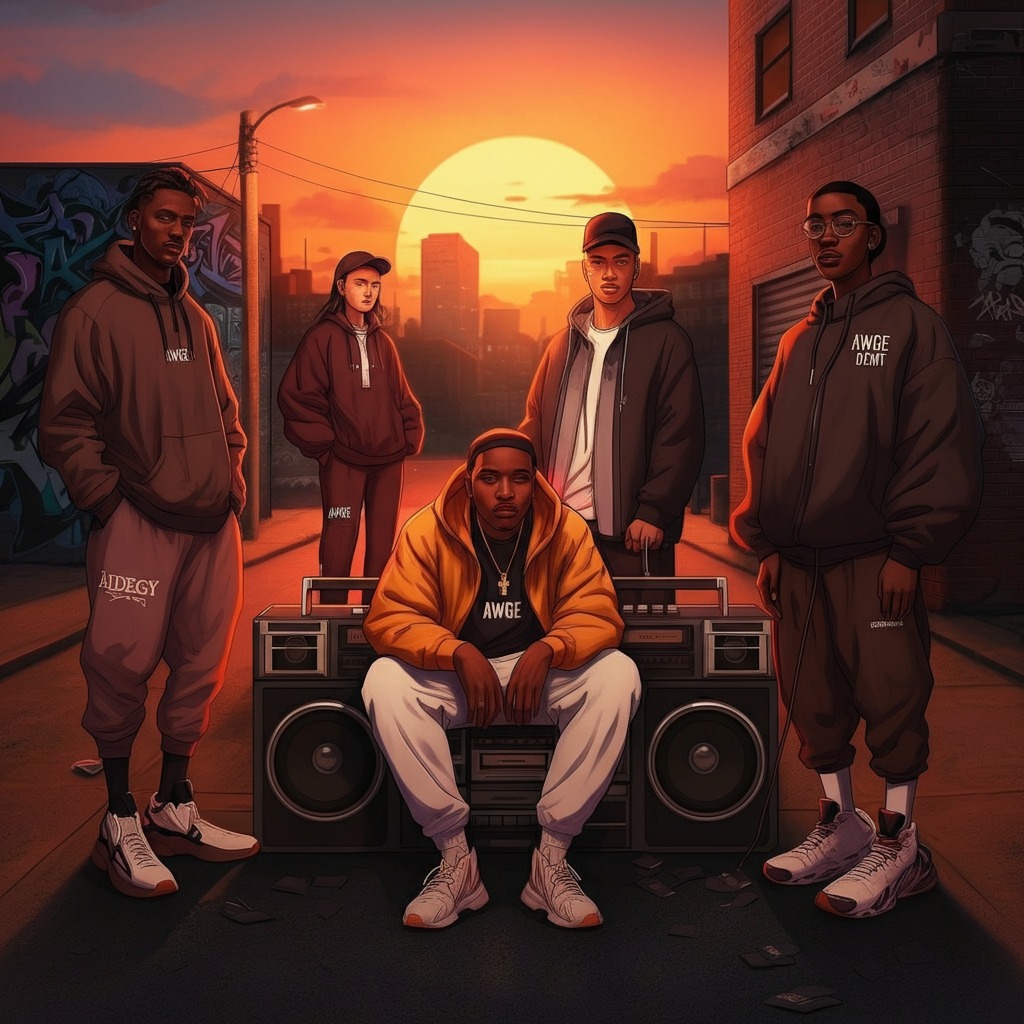The Role of Hip-Hop in Shaping Streetwear Trends
From the baggy jeans of the 90s to today’s luxe collaborations between rappers and high-end brands, hip-hop culture has been a driving force behind the evolution of streetwear. It’s more than a fashion statement—it’s a lifestyle, a way to show identity, and a cultural movement that transcends music. Hip-hop and streetwear are so interconnected that it’s nearly impossible to tell the story of one without mentioning the other.
But how did hip-hop become such a powerful influence in shaping streetwear trends? This blog digs into the history, key figures, and monumental collaborations that paved the way. We’ll explore how artists like Kanye West and A$AP Rocky redefined fashion and dissect what this deeper connection means for today’s style-conscious crowd.
The Roots of Hip-Hop and Fashion Culture
The Beginnings of Hip-Hop Style
Hip-hop emerged in the late 1970s in the Bronx, and from its inception, fashion was a way for artists to express individuality. Pioneering MCs and DJs, like Grandmaster Flash and Afrika Bambaataa, used their clothing to show off their swagger and creativity. Tracksuits, Kangol hats, shell-toe Adidas sneakers, and gold chains became synonymous with the genre, as artists wore what resonated with their lifestyles and communities.
Brands like Adidas entered the scene early with a direct connection to the culture. When Run-D.M.C. released “My Adidas” in 1986 and signed an endorsement deal with the brand, it set the blueprint for future collaborations between hip-hop and major fashion companies.
Why were clothes so important in hip-hop’s early days? Hip-hop style was about more than looking good. According to journalist and fashion historian Elena Romero, “It was a way to say, ‘Here I am, and I’m proud.’ Clothes became a vehicle for self-expression in communities that were often overlooked by mainstream fashion.”
The 90s Era of Oversized Fits and Bold Logos

By the 1990s, hip-hop had firmly cemented itself as a global movement, and so did its style. Baggy jeans, bomber jackets, oversized T-shirts, and sports jerseys dominated during this time. Urban brands like Cross Colours, FUBU, and Karl Kani thrived as they catered directly to the hip-hop community.
Tommy Hilfiger, though not initially a “streetwear” brand, earned a cult following within hip-hop circles. Artists like Tupac Shakur and Aaliyah made the brand iconic—bringing oversized Tommy logos to prominence in music videos and performances. Speaking on this blending of music and fashion, Tommy Hilfiger himself said, “I didn’t choose hip-hop; hip-hop chose me.”
How Hip-Hop Shaped the Rise of Modern Streetwear
Kanye West and Yeezy
Fast forward to the 2000s, and a new wave of hip-hop artists began reimagining fashion’s possibilities. Kanye West is arguably the most influential figure driving modern streetwear’s evolution. His Yeezy line in collaboration with Adidas blurred the lines between sportswear and luxury clothing, creating minimalist designs that shaped sneaker culture and streetwear trends.
Kanye explains his design philosophy with Yeezy as “bridging the gap between what’s accessible and what’s aspirational.” His limited-edition sneakers, like the Yeezy Boost 350, sparked massive hype and resale markets, emphasizing streetwear’s exclusivity and aligning it with high fashion.
A$AP Rocky and AWGE
Similarly, A$AP Rocky has become a style icon and tastemaker in streetwear. From his bold use of designer brands like Raf Simons to the edgy creations under his collective AWGE, Rocky embodies the fusion of hip-hop flair with avant-garde aesthetics.
Rocky’s collaborations with brands such as Guess and Under Armour bring nostalgic elements into contemporary designs. When asked about his influence on fashion, A$AP Rocky confidently stated, “It’s about showing the world that the streets can dictate luxury—not the other way around.”
Virgil Abloh, Off-White, and Hip-Hop
One cannot ignore Virgil Abloh’s colossal impact on streetwear. While not a musician, his credentials as Kanye West’s creative director solidified his status in hip-hop culture. Off-White, a brand he founded, is a perfect example of luxury streetwear—drawing inspiration from urban settings and hip-hop’s DIY ethos.
“We are designing for today’s youth culture,” Virgil Abloh once said. “And hip-hop is at its core.”
The Power of Collaborations Between Artists and Brands
The Big Money Effect
Today, collaborations between hip-hop artists and major fashion brands have become the norm. From Travis Scott’s partnership with Nike, resulting in the iconic Cactus Jack Jordans, to Cardi B and Reebok teaming up for bold sneaker silhouettes, these partnerships are not just about style—they’re massive business ventures.
For brands, aligning with chart-topping artists delivers credibility and instant buzz. And for artists, these partnerships elevate their personal brands and provide further creative outlets. The result? An unprecedented level of synergy that fuels the global streetwear industry, now valued at over $185 billion.
Smaller Brands Gaining Big Attention
It’s not just major labels benefitting from hip-hop’s influence. Smaller, independent streetwear brands often gain traction after receiving an artist’s endorsement. For instance, Tyler, the Creator’s work with Golf Wang has propelled his quirky designs into mainstream style. Similarly, Pharrell’s collaboration with Billionaire Boys Club maintains relevancy years after its inception.
Streetwear Today and Its Cultural Significance
A Shift Toward Sustainability
The current generation of streetwear enthusiasts not only loves cool designs but also demands ethical production. Brands like Pangaia, supported by music influencers, are marrying sustainability with aesthetic appeal. Hip-hop continues to drive these conversations, encouraging both transparency and innovation from clothing labels.
Community and Storytelling
At its heart, streetwear isn’t just about buying clothes—it’s about being part of something bigger. Drop culture, limited-run capsules, and collaborations create a sense of community and exclusivity among fans. Whether it’s waiting in a Supreme line or scoring a Travis Scott x Jordan sneaker online, these moments carry an emotional weight that resonates deeply.
Rapper and entrepreneur Nipsey Hussle once remarked, “The streets set the tone for what’s hot. That’s who you design for.”
International Impact
Streetwear, born on the streets of New York, has gone global, with its influence seen everywhere from Seoul’s futuristic designs to London’s gritty chic. Rising hip-hop artists from regions like Africa and South America are giving streetwear their own local spin, making it more diverse and inclusive.
Looking Ahead at Hip-Hop’s Influence on Fashion
Hip-hop started as a grassroots movement, and its influence now permeates every level of fashion—from fast-fashion collections to haute couture runways. This cross-pollination ensures that streetwear, driven by the beating heart of hip-hop culture, will remain a dominant force in the fashion world for years to come.
But the question remains—how will the next generation of hip-hop artists influence not just the clothes we wear, but the way we think about fashion’s role in addressing issues like race, sustainability, and technology?
If you are a lover of both fashion and music, keep your wardrobe flexible and your creativity flowing. Hip-hop and streetwear will continue to grow together, offering endless inspiration for years to come.
